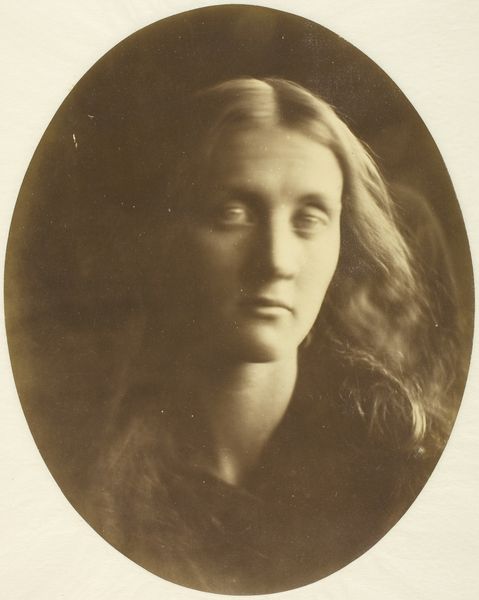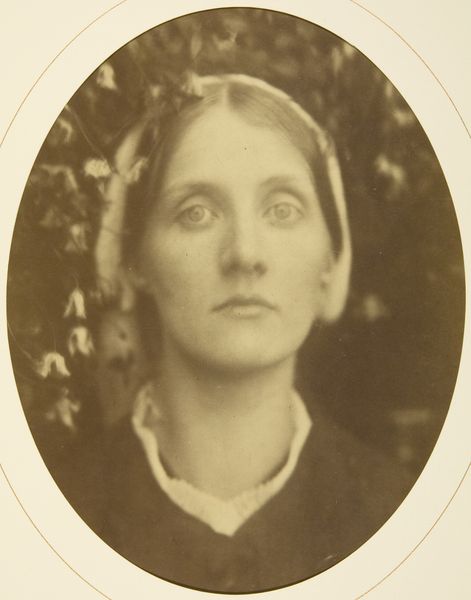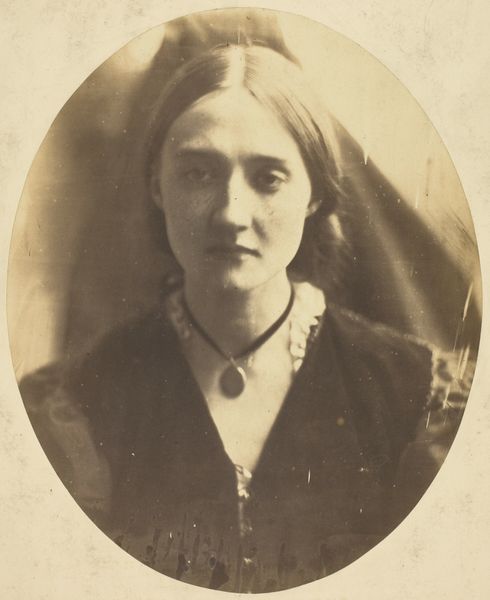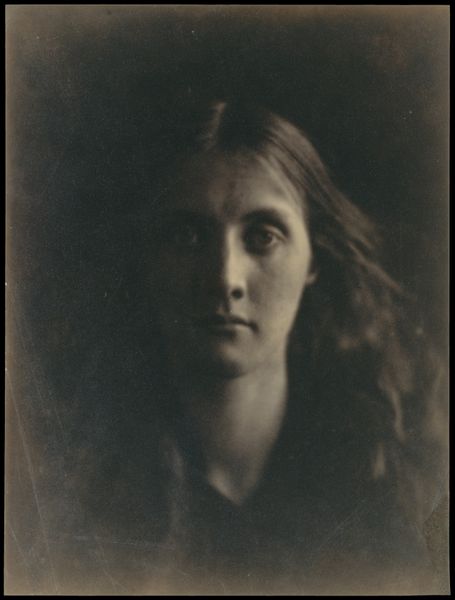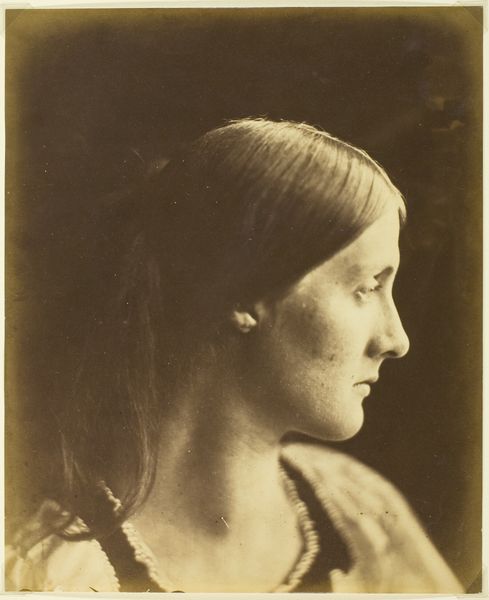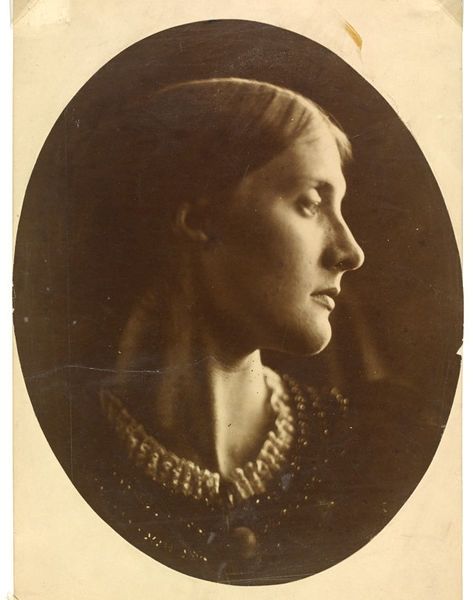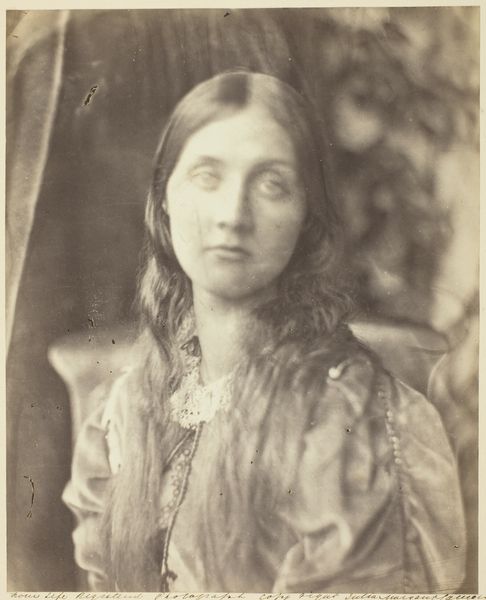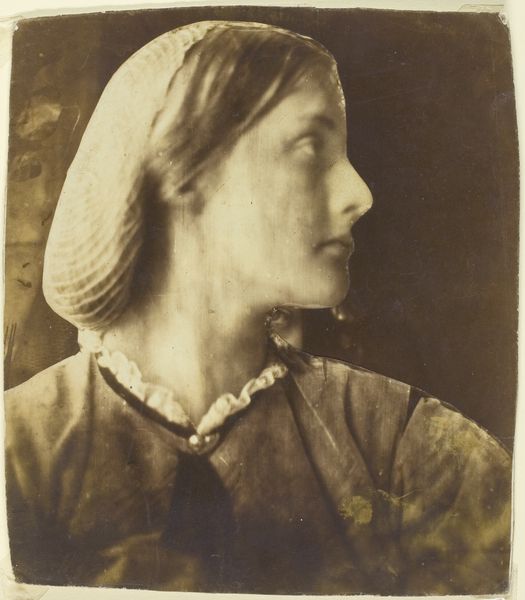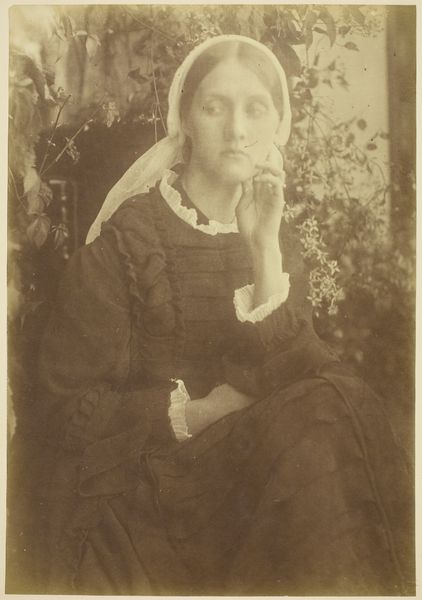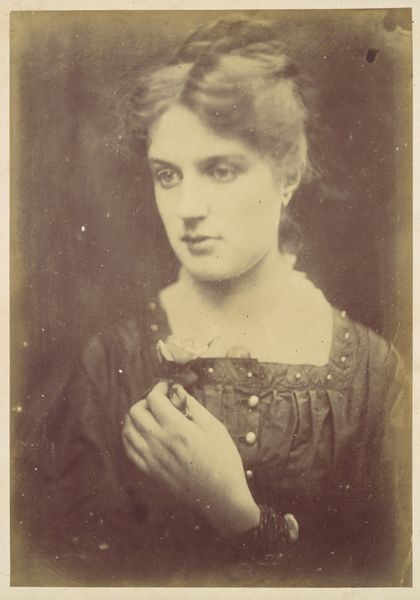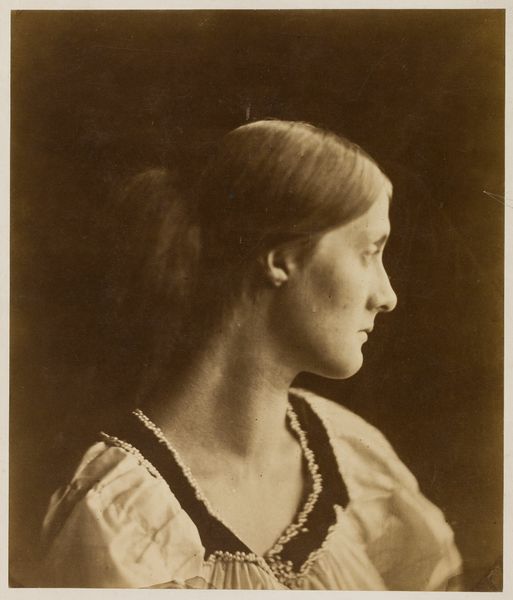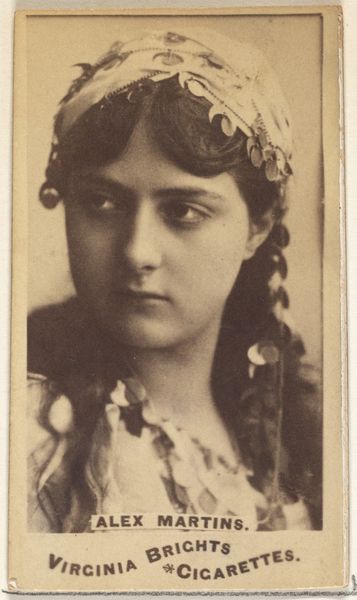
Julia Jackson ("Saint Julia", "My Niece Julia", "My Favorite Picture") 1867
0:00
0:00
Dimensions: 33.6 × 26.3 cm (image/paper, oval)
Copyright: Public Domain
Curator: Julia Margaret Cameron's 1867 photograph, "Julia Jackson," currently held at the Art Institute of Chicago, is our focus today. It's an albumen print, a process highly favored during that era. Editor: There's a pre-Raphaelite dreaminess to this portrait; she almost appears to be a figure from Arthurian legend, gazing forlornly toward some distant shore. Curator: Absolutely. And the soft focus isn’t a flaw, but a conscious choice reflecting Romanticism’s influence, eschewing sharp realism for emotive power. Cameron embraced the imperfections inherent in collodion wet-plate process. Imagine the darkroom, the chemistry—coating the glass plates, sensitizing them… It was laborious. Editor: Her niece, Julia Jackson, became a symbol, practically an icon. The slightly downward cast of her eyes—so common in religious painting—lend a quiet spirituality to the composition. Given the titles like "Saint Julia," it feels as though Cameron purposefully infused her with that kind of resonance. Curator: That connects directly to the context. Cameron wasn't producing casual snapshots. Her access to this technology—silver and photographic equipment, darkroom space—positions her within a certain economic strata. Plus, posing someone in such soft light and drapery consumed both labor and resources. Editor: The use of a circular or oval framing—deliberately echoing religious icons and classic cameos—compounds that visual language. The deliberate artistic reference here suggests a conscious intent. We are prompted to interpret, to see her as something more than simply an individual woman. Curator: It really invites us to think about the value embedded in photographic portraits of that time and question what work it produced socially. These photographic images had an elevated importance within a specific Victorian setting. Editor: Yes, exactly, thinking of Julia Jackson here as a canvas onto which societal and personal narratives are painted, it shows the evolving function of the photographic medium. Curator: By delving into process, materials and class surrounding its creation, we see that this portrait goes beyond merely representing a pretty face. Editor: While decoding the symbolic meaning inherent in these early photographs invites us to contemplate both our cultural memory and how it shapes our present interpretations.
Comments
No comments
Be the first to comment and join the conversation on the ultimate creative platform.
